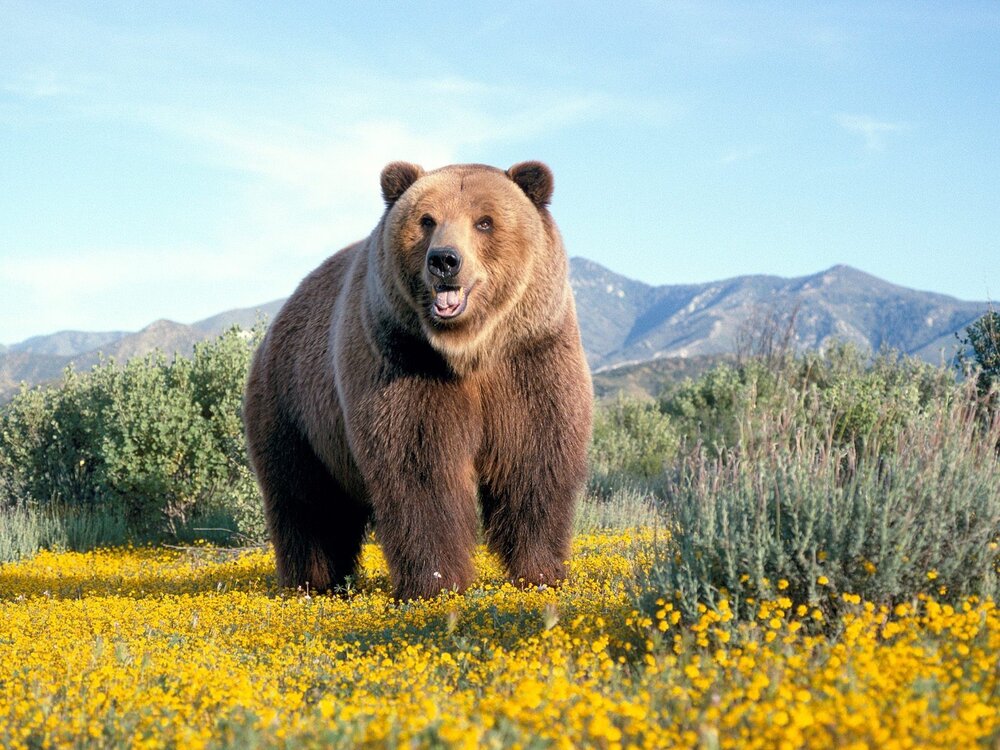Extinction alarm raised for Persian bears

TEHRAN – The two species of brown and black bears inhabiting Iran are on the verge of extinction due to natural and anthropogenic threats.
There are eight bear species in the world, including polar bears, brown bears, black bears, sloth bears, red pandas, Asiatic bears, spectacled bears, and the giant panda, each of which is in a specific biological environment, such as polar bears are on the verge of extinction due to global warming, and some others like the giant panda, are under serious threat.
The Baluchi black bear is second only to the cheetah in terms of the importance of protection in the country. Baluchi black bear has biological, aesthetic, scientific, and educational values, but is being pushed towards extinction due to habitat degradation and illegal poaching.
Habitat destruction, food shortages, skin trade, taxidermy, and conflicts with humans are among the main reasons threatening their lives. The Asiatic black bear lives mainly in forested areas, especially in hilly and mountainous areas at altitudes of 500 meters to 2700 meters, and is found in the provinces of Kerman, Hormozgan, and Sistan-Baluchestan with very low density.
The brown bear is distributed widely in the country (along the Alborz and Zagros mountain ranges), but the existing small populations are highly fragmented due to human activities. This situation, along with the severe conflict between the species and humans that results in their death, causes great concern.
Although the brown bear is ranked as "least concern" in the Red List of the International Union (IUCN), the population of species in Iran and West Asia (Middle East) is definitely not included in this ranking.
In fact, this rank does not match the available evidence and the rapid decline of the bear population in Iran. Bears are ecologically very important. This large carnivore is at the top of the food pyramid and is considered umbrella species for the ecosystem that has created a wide network of relationships with living and non-living parts of the environment.
For this reason, the removal of the bear from its habitat has upset the ecological balance and may have negative consequences for the population of other species. Also, due to its large size and behavioral characteristics, it needs a large home range or territory, as a result, the protection of this species means the protection of a wide range of habitats, which makes it possible to preserve all other ecosystems at the same time.
In fact, this species acts as a protective umbrella for the entire ecosystem and other species in an area.
Habitat destruction, food shortages, skin trade, taxidermy, and conflicts with humans are among the main reasons threatening their lives, although sometimes the male ones kill the cubs in order for the mother to be ready to regenerate.
Gholamreza Ebdali, head of the wildlife protection and management office of the Department of Environment said that due to the presence of two species of black bear and brown bear in 25 provinces of the country, the bears' protection plan was implemented in 2016.
Due to the conflicts between humans and bears, as well as the seasonal changes in the species’ behavior, more bears are killed every day. The most important reasons for these conflicts include the destruction of the habitat, lack of proper waste disposal, construction of gardens, and establishment of beehives in the depths of the pristine habitats of the species, and lack of proper care of livestock.
Since 2016, nearly 80 cases of species deaths due to human factors and mostly direct gunfire have been reported from the provinces.
The normalization of the presence of wildlife next to people can definitely be harmful to both species and humans. Domestication of animals takes them away from their natural life and takes away the power of the animal’s routine based on its inherent nature. Also, the presence of common pathogens between humans and animals is extremely dangerous for humans and can cause irreparable problems.
In fact, it is the human who has encroached on the animal's habitat; Therefore, the best and most correct thing is to provide solutions to interact with the species.
FB/MG
